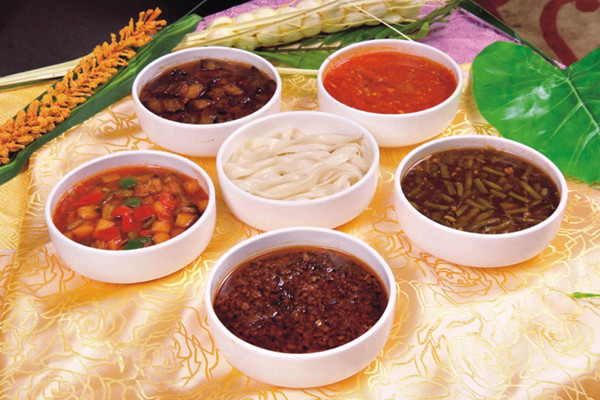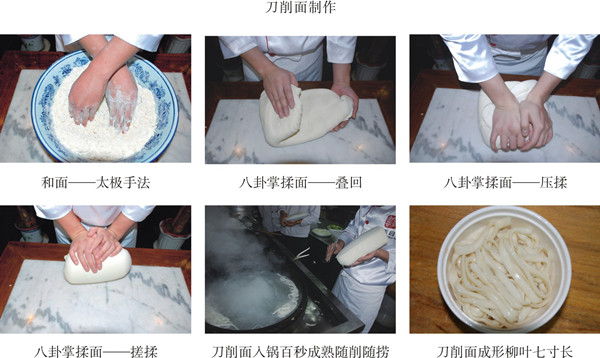
Shanxi noodles [Photo provided to chinadaily.com.cn]
Shanxi's traditional wheaten foods are home-cooked dishes with regional characteristics of Shanxi that have been produced, developed and created on the Loess Plateau for thousands of years. Since ancient times, Shanxi's edible crops have been primarily wheat and small grains. People's household foods are mainly made with flour produced from these two crops.
Through the accumulation of long-term production experience, the continuous improvement and innovation of production methods and techniques, and the matching of non-staple foods and seasonings, Shanxi's wheaten foods have evolved into various varieties with diverse and delicious flavors. At the same time, they are also rich in nutrition and suitable for people of all ages.

The steps for making dragon's beard noodles [Photo provided to chinadaily.com.cn]
During the Ming (1368-1644) and Qing (1644-1911) dynasties, Shanxi wheaten foods became specialty dishes and began to enter shops and restaurants. By the end of the Qing Dynasty, there were more than 300 categories of traditional Shanxi noodles.
Shanxi's traditional wheaten foods are exquisitely prepared – from the selection of raw materials to the production process to the finished noodles. The dishes demonstrate top-quality craftsmanship and cultural connotations of Shanxi.

The steps for producing sliced noodles [Photo provided to chinadaily.com.cn]
The skills for making wheaten foods have also become a unique form of performance, with ornamental and aesthetic value.
The craftsmanship and culture of Shanxi's traditional wheaten foods are of great significance to studying the physical and personal characteristics, folk customs and regional dialects of the Shanxi people. The foodstuffs also highlight ethnic traditions, the region's ancient cooking legacy, and ancient mountain farming development.
